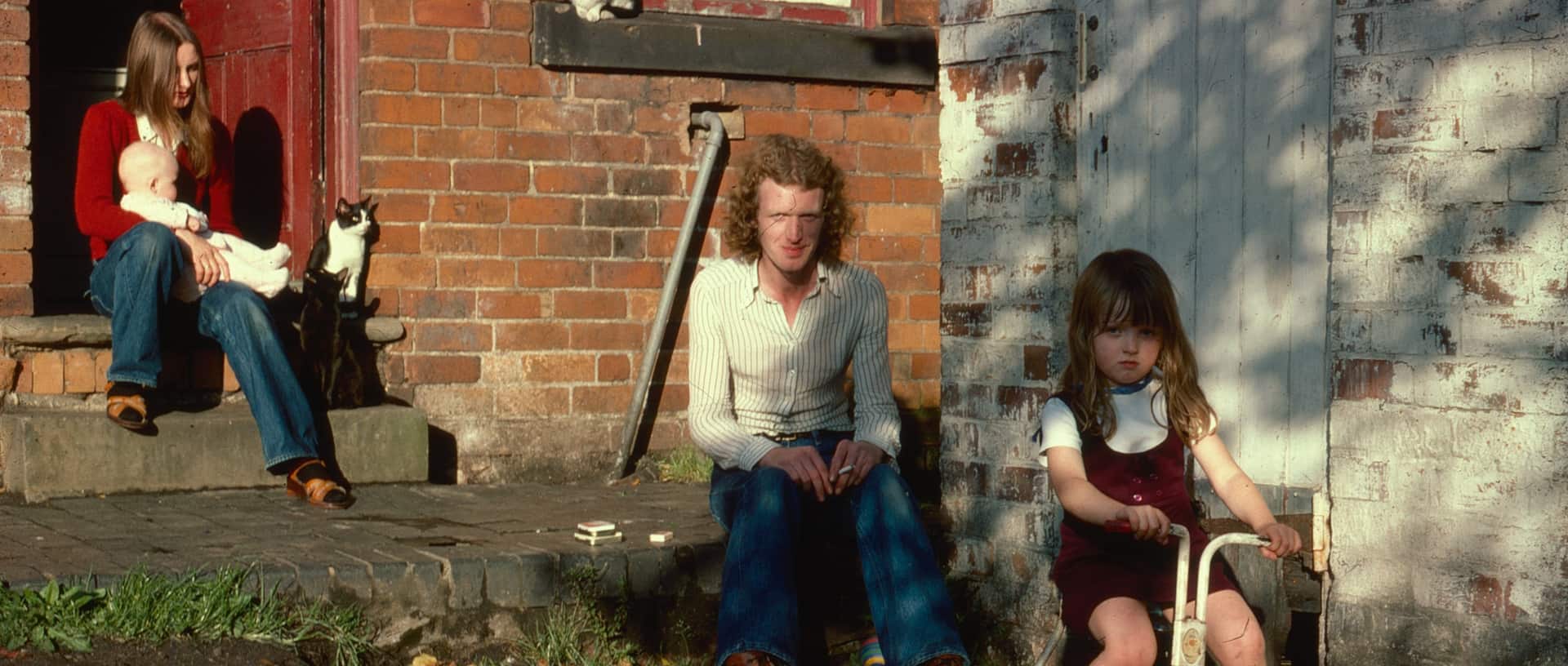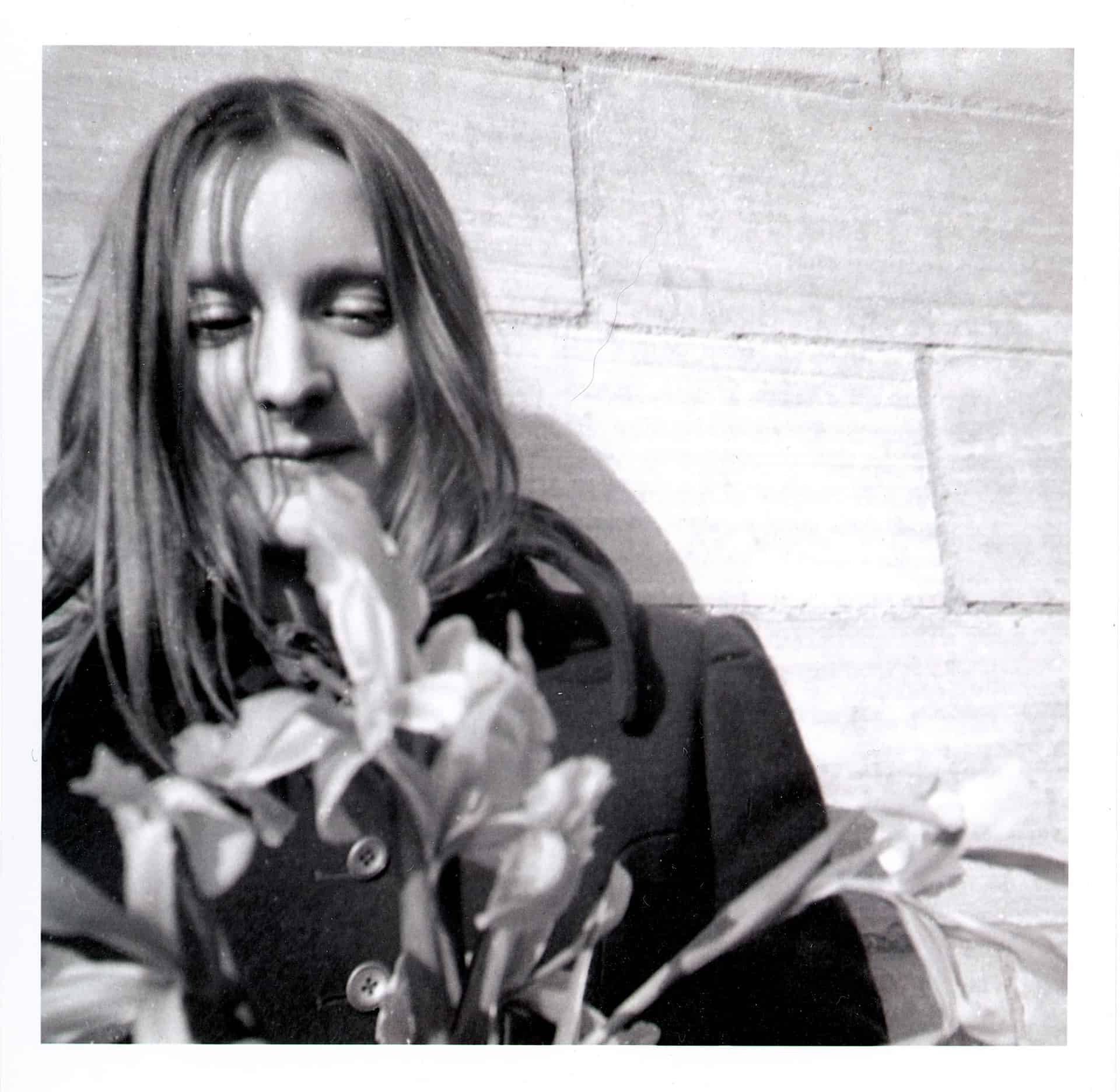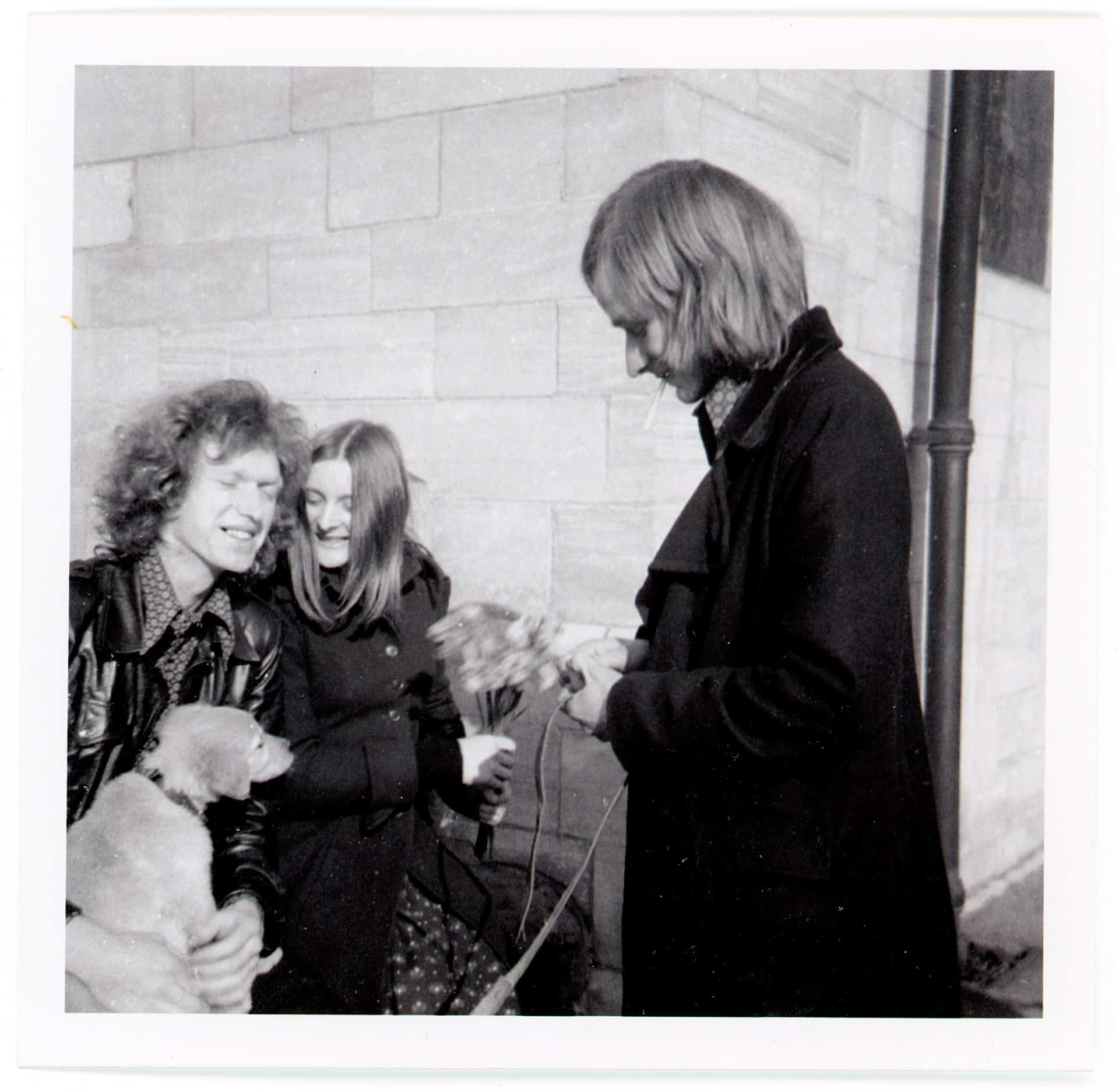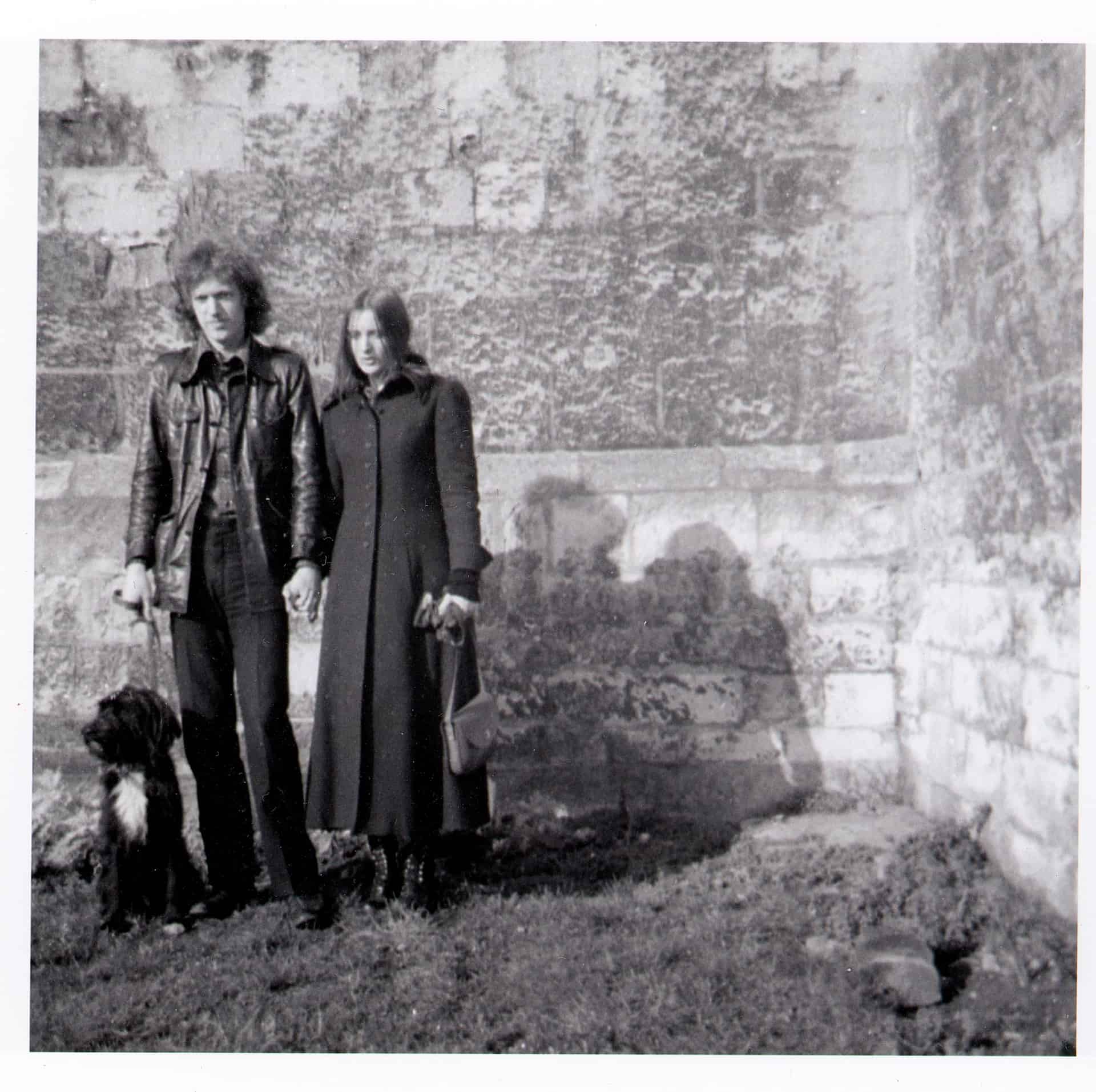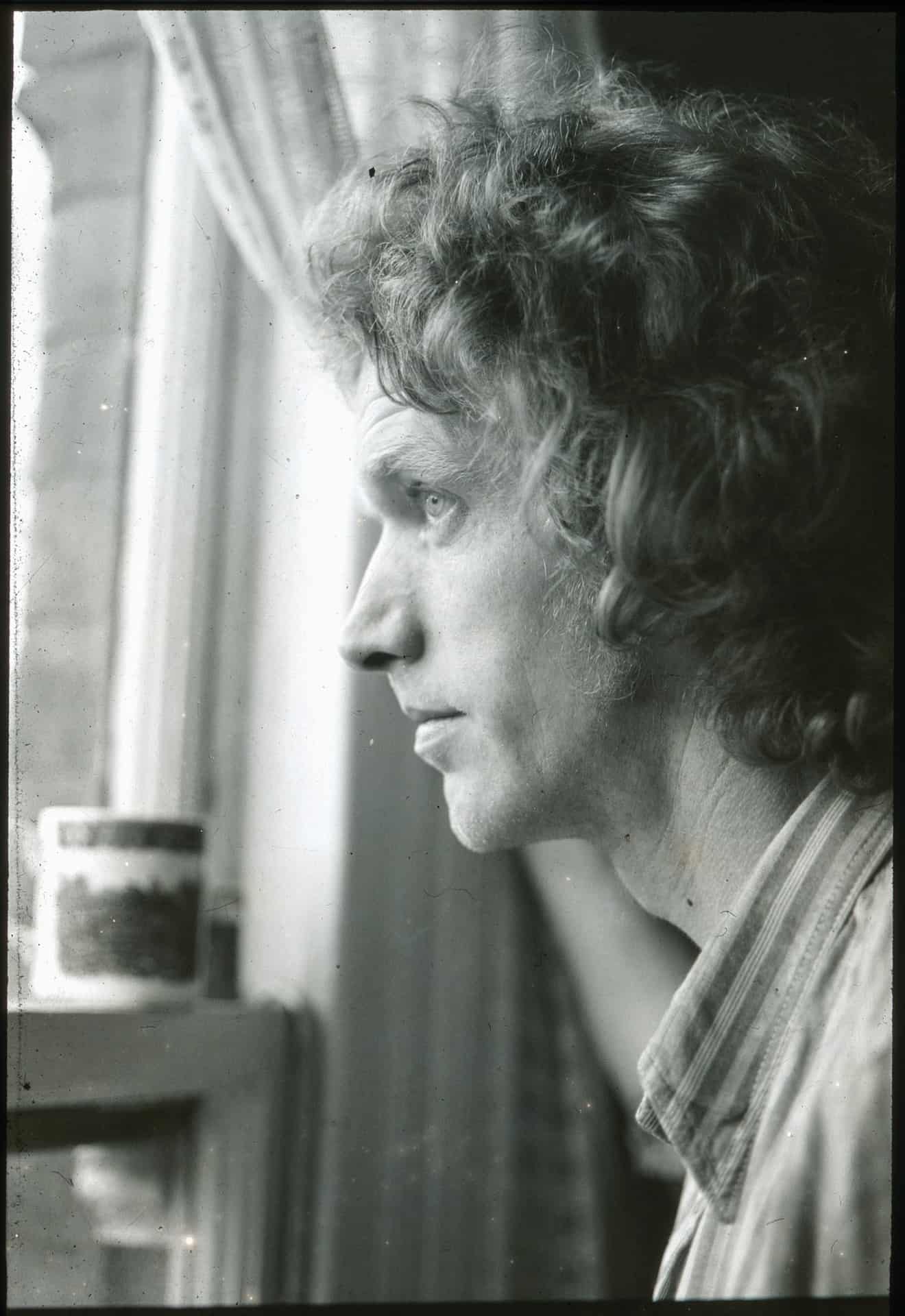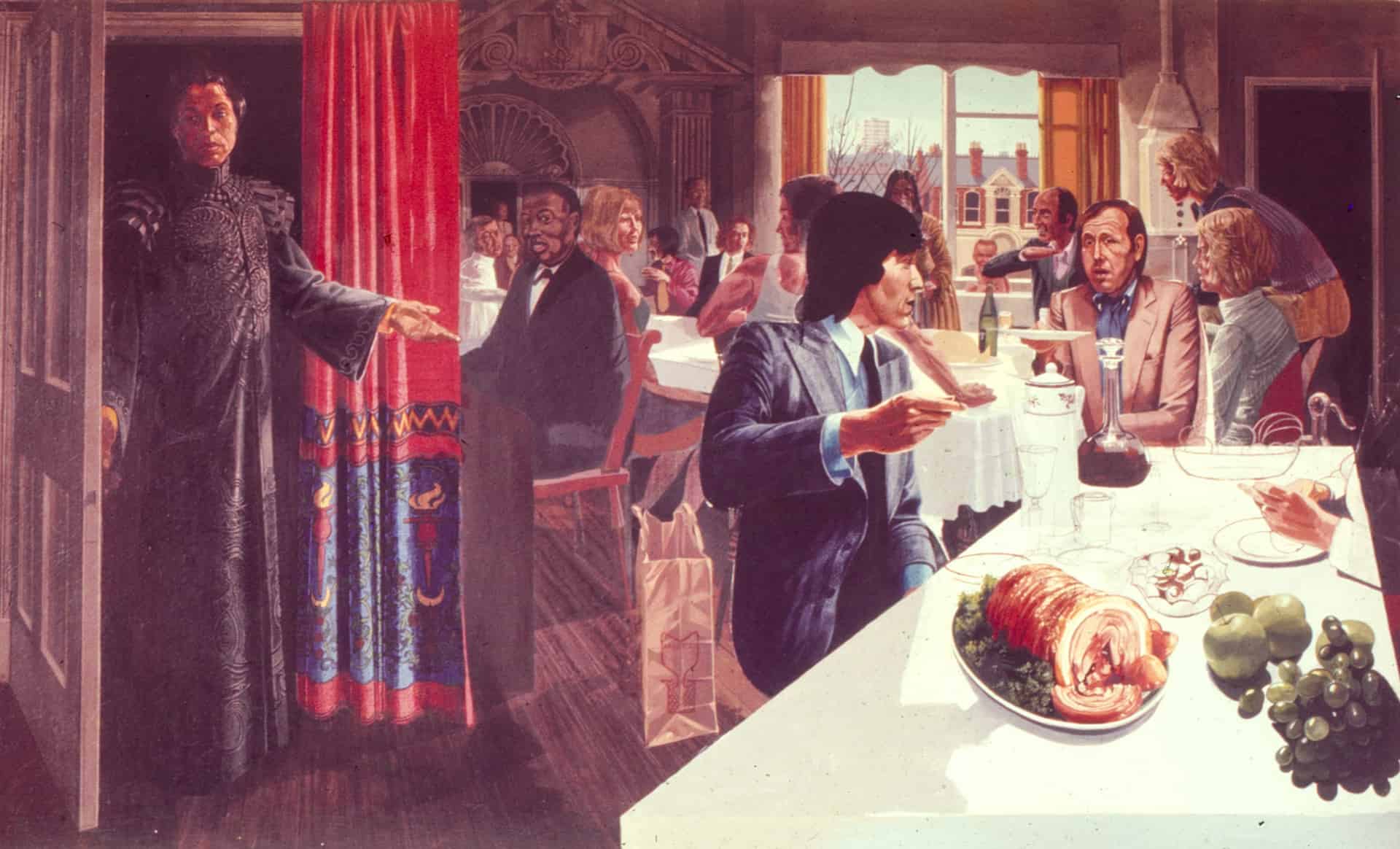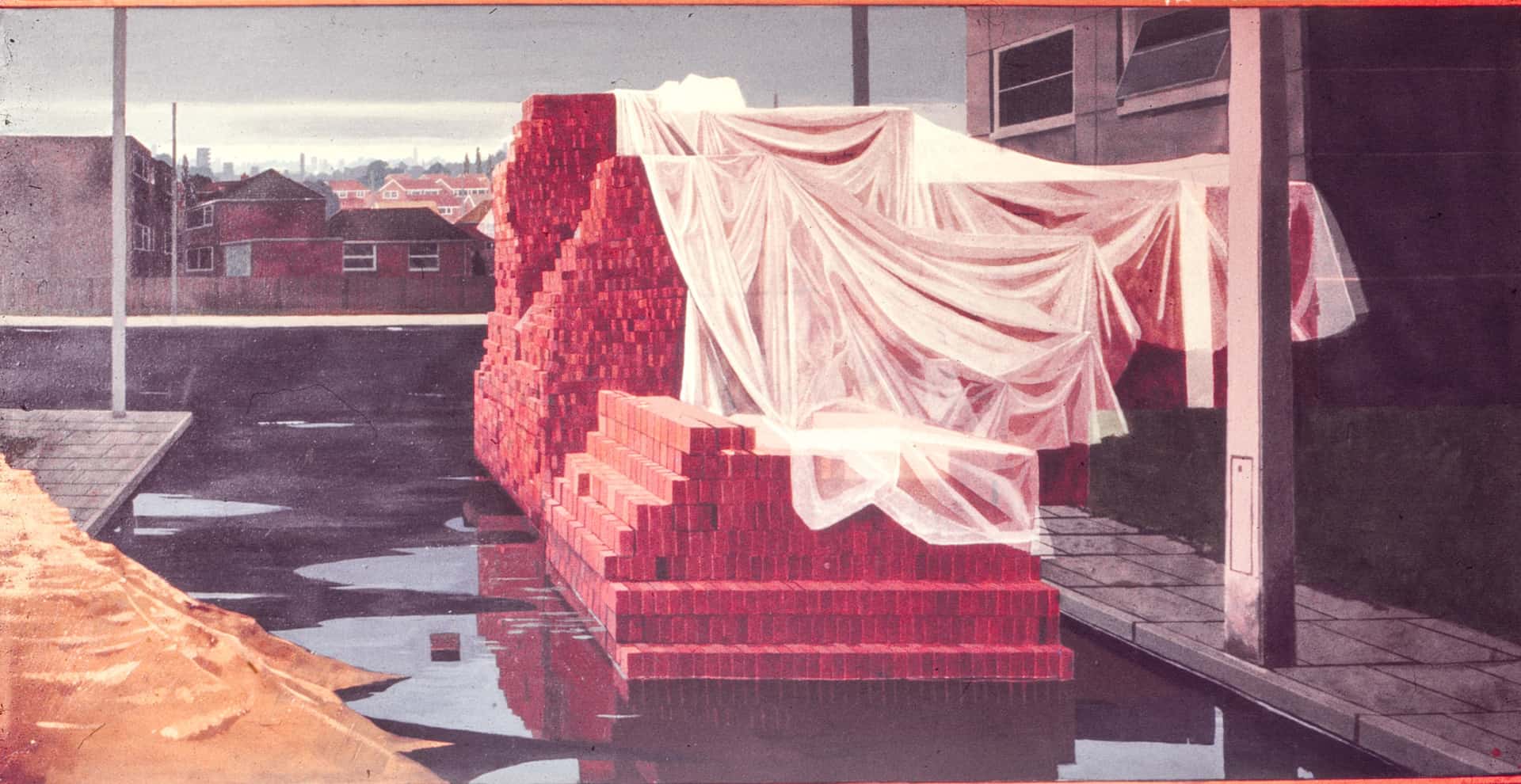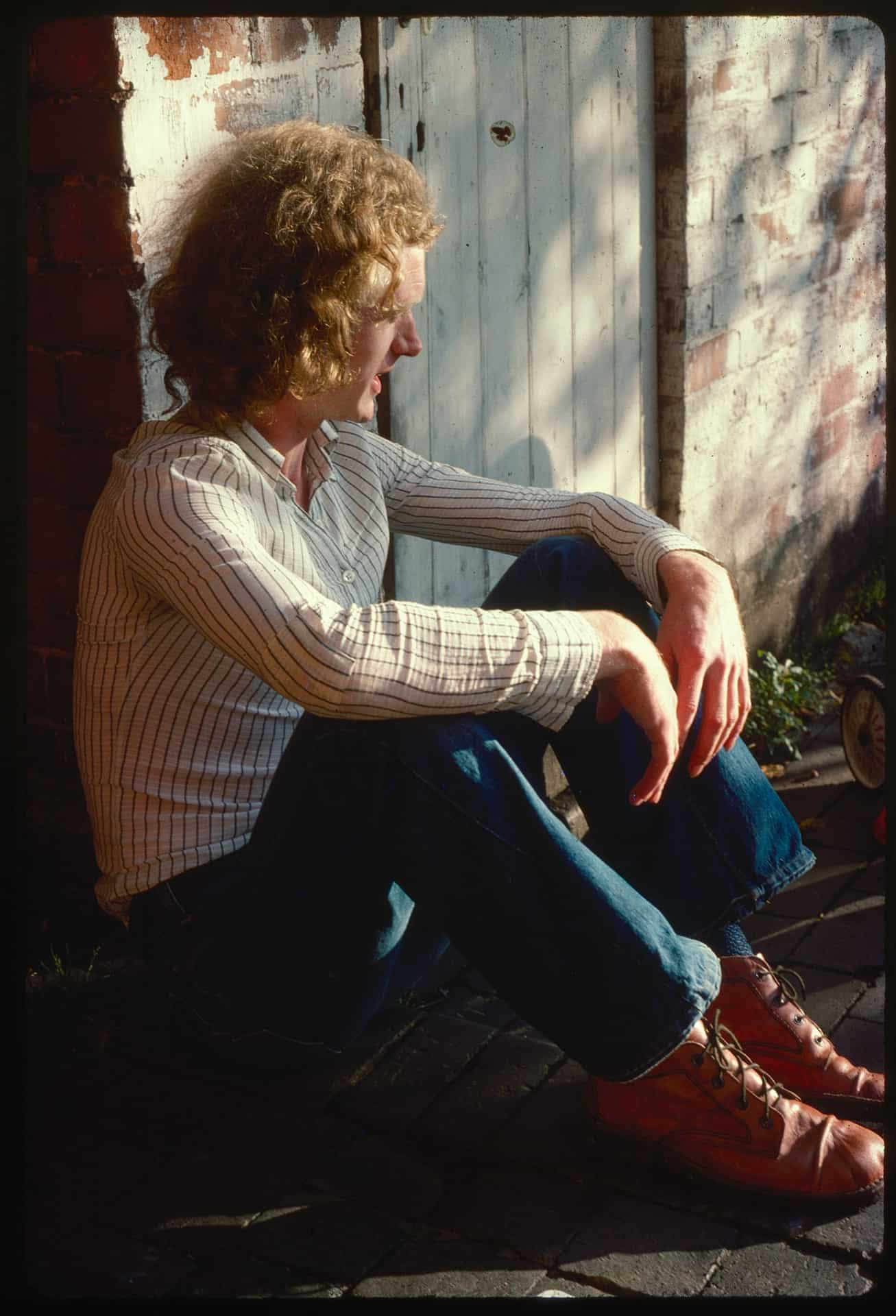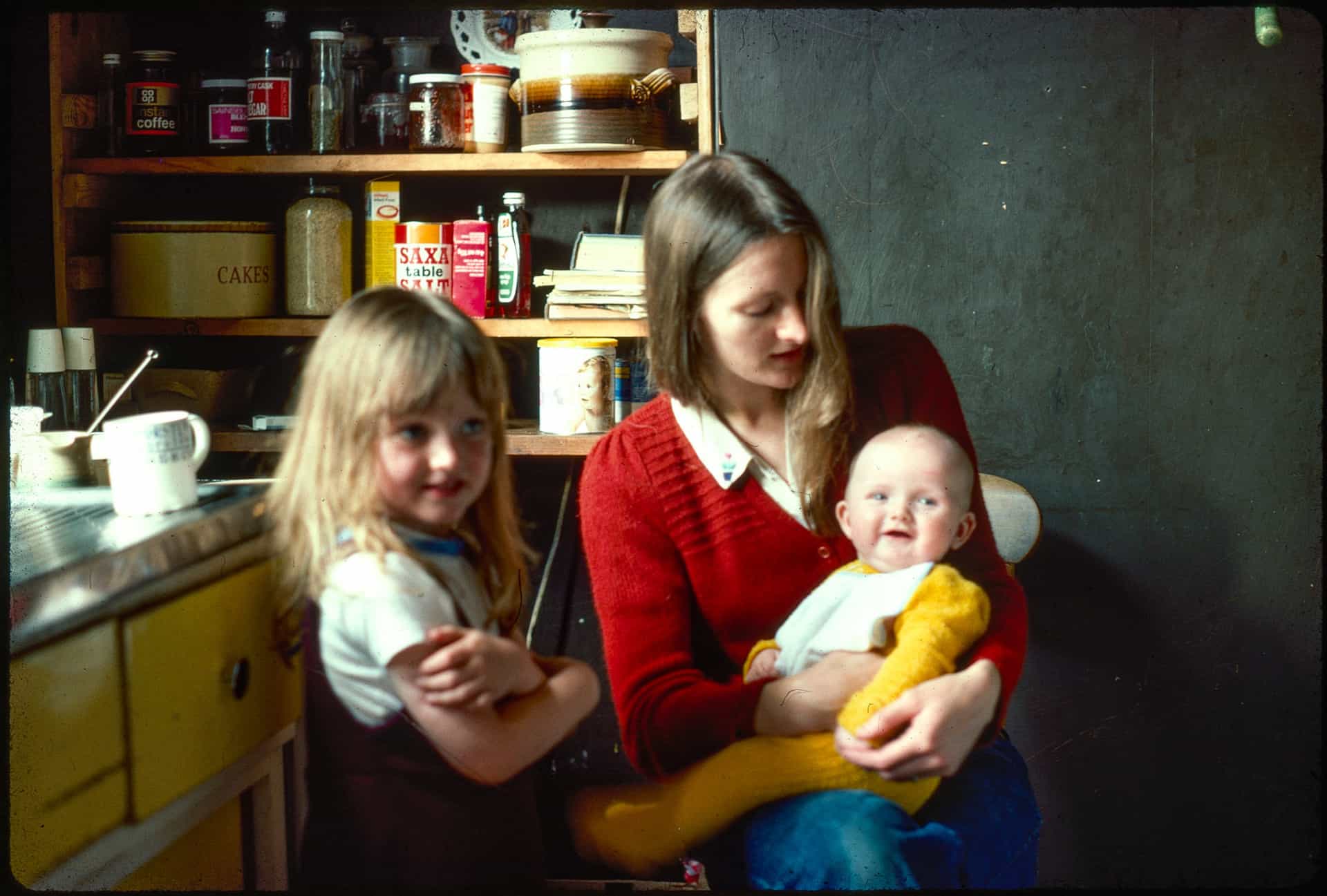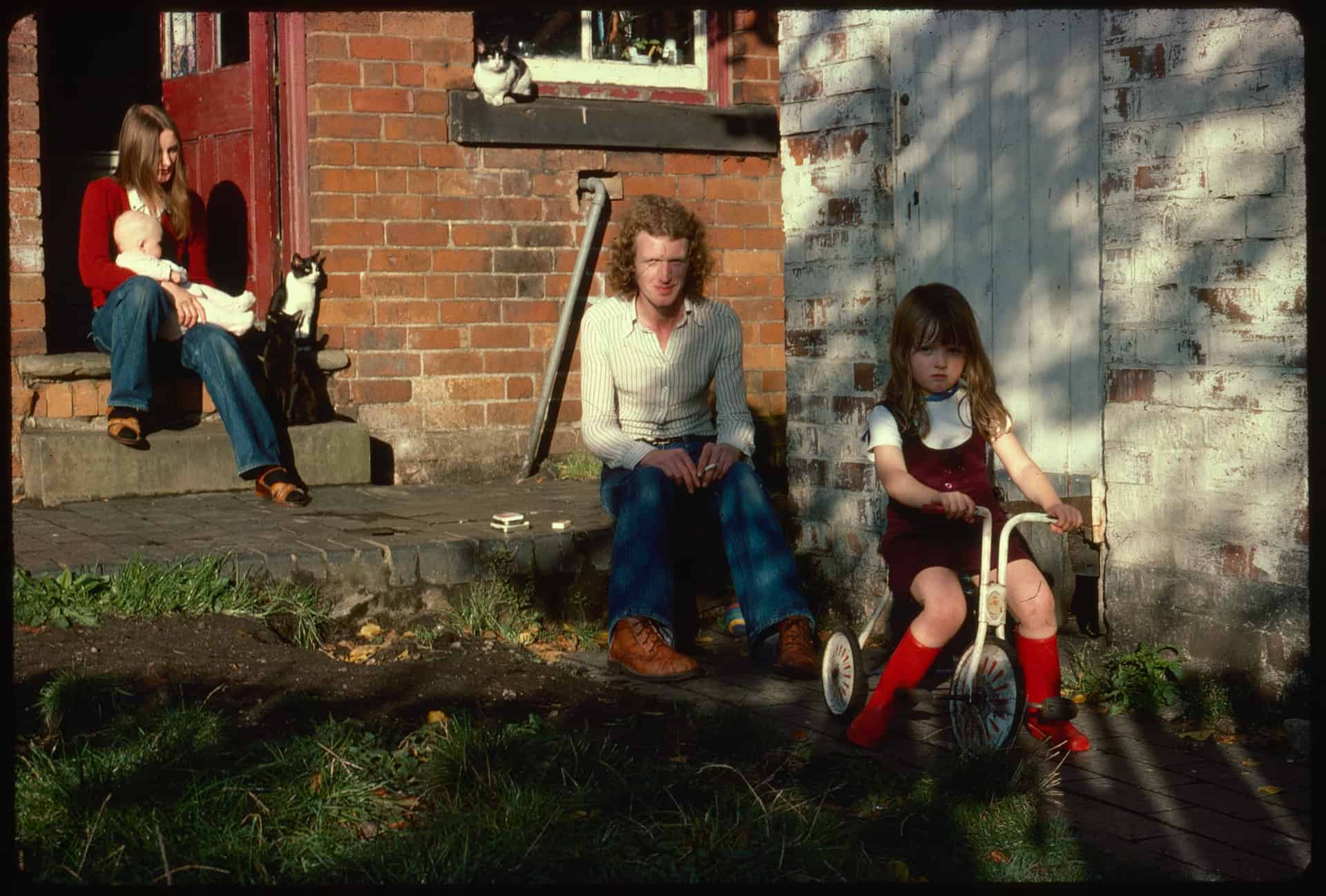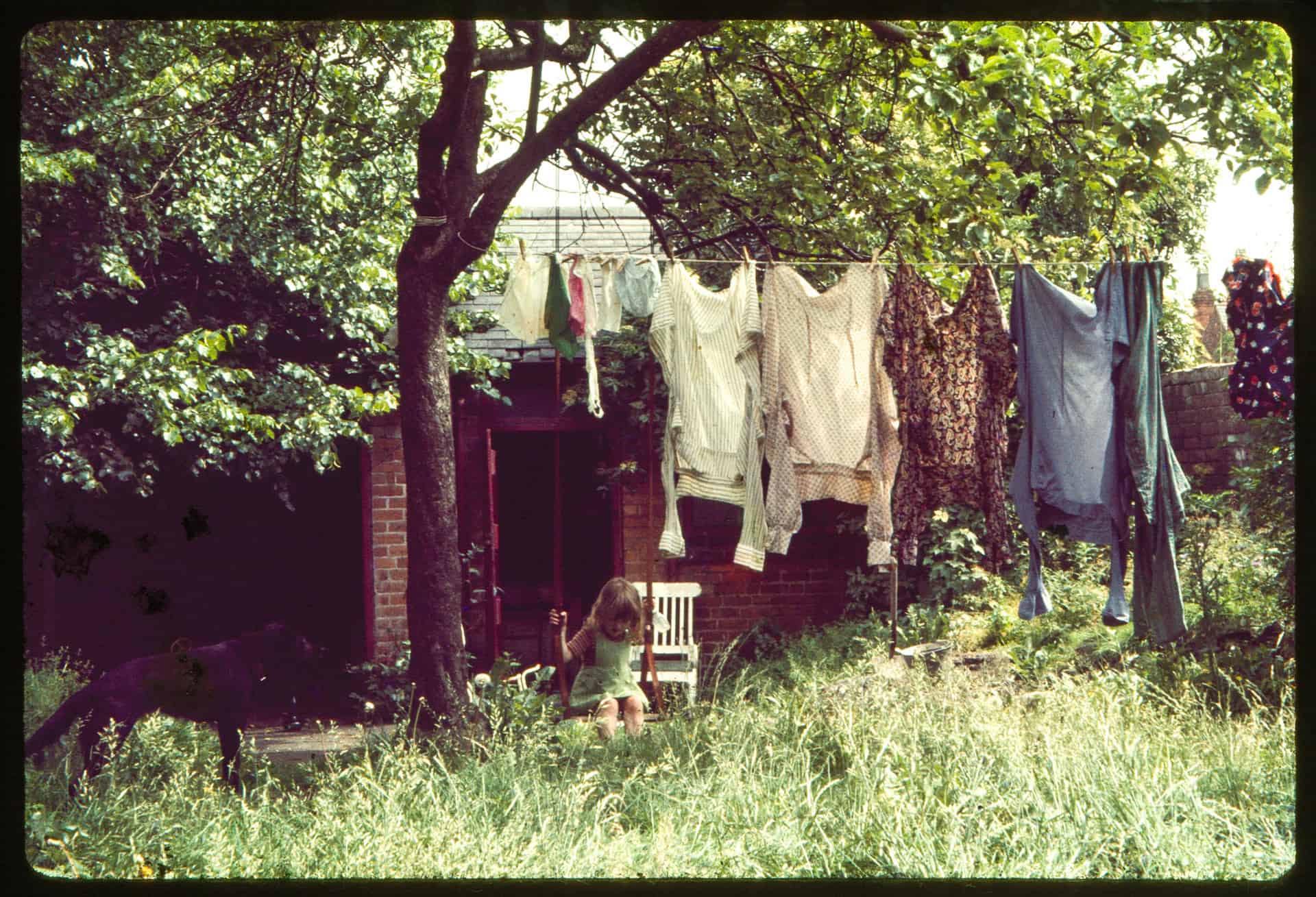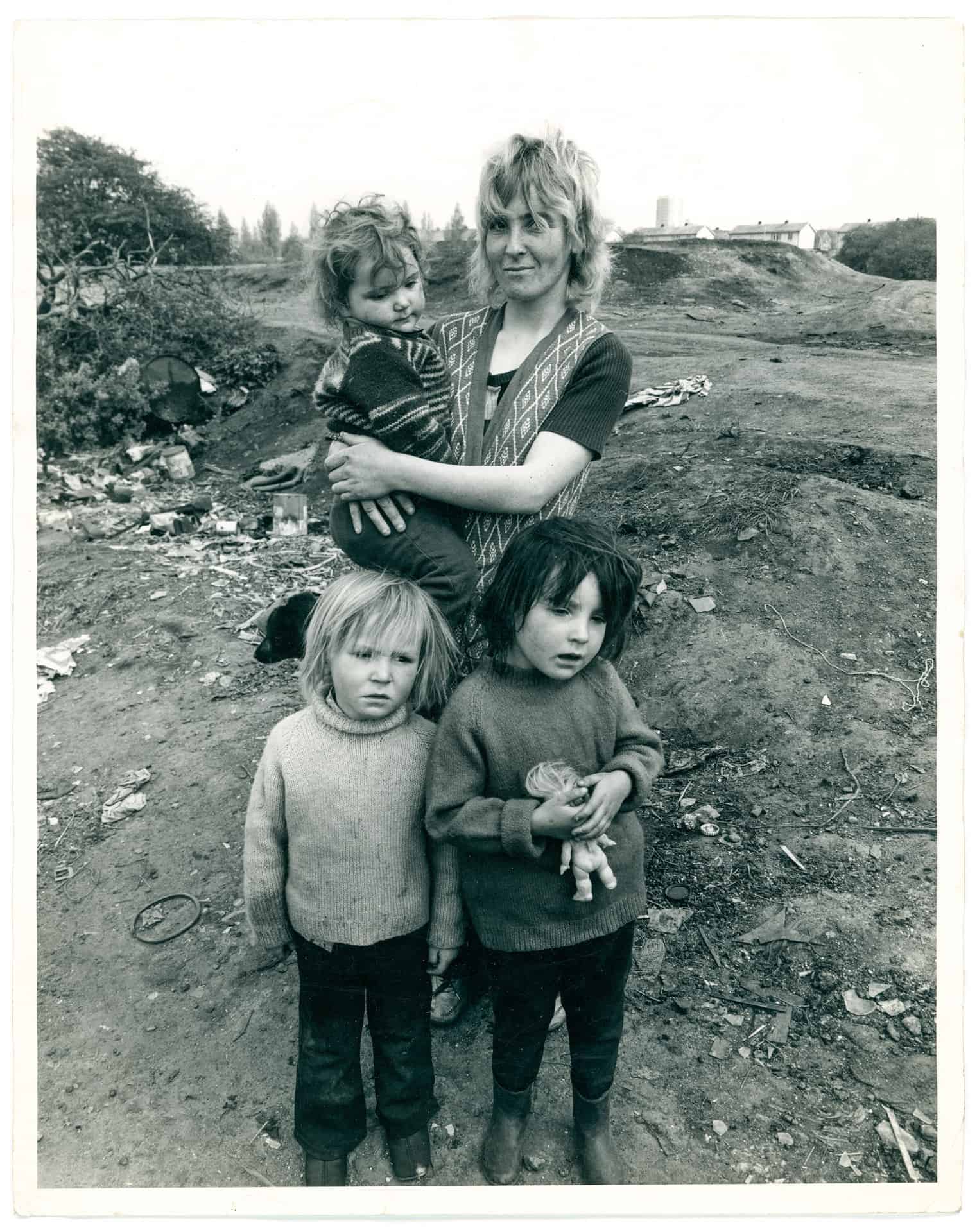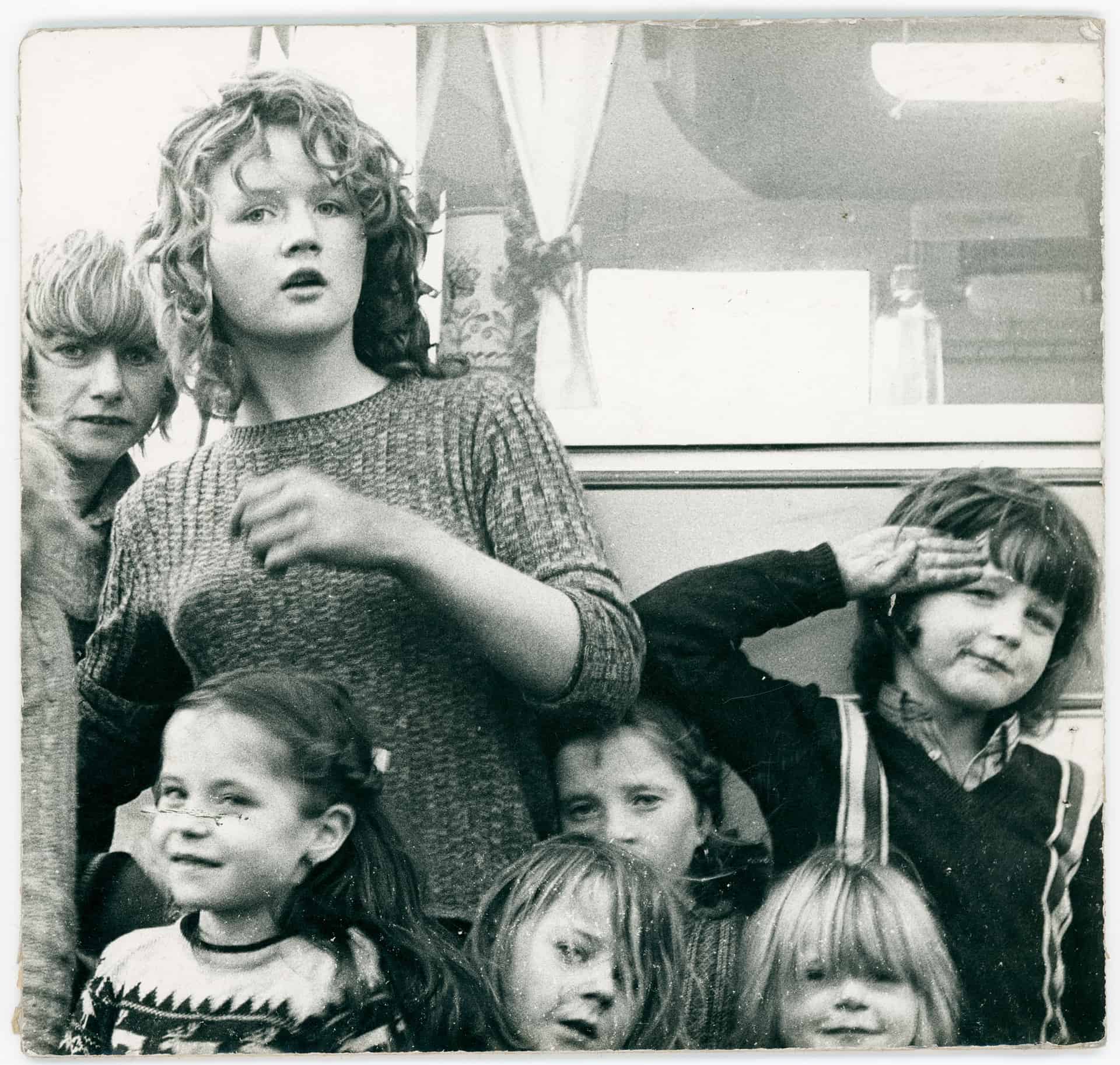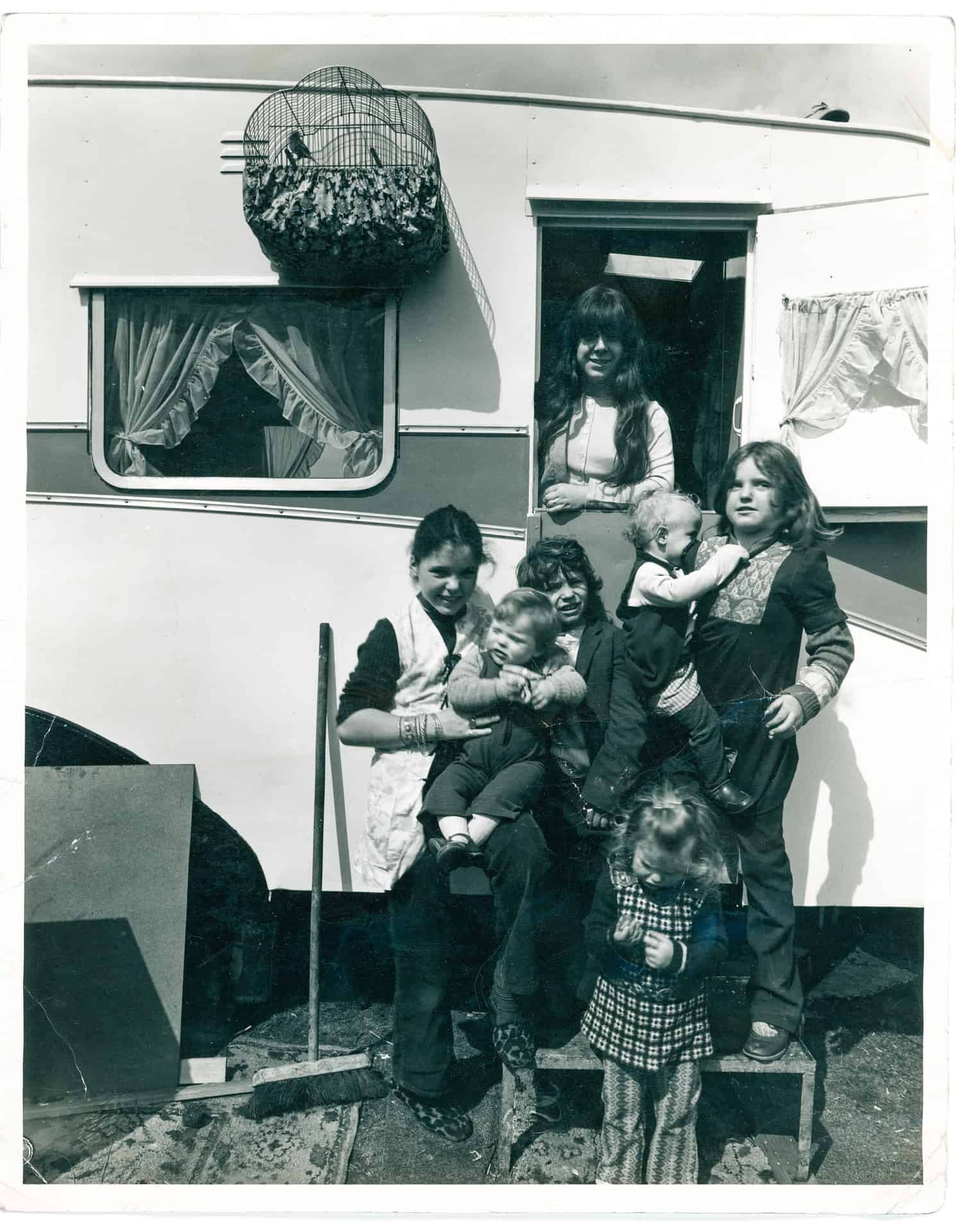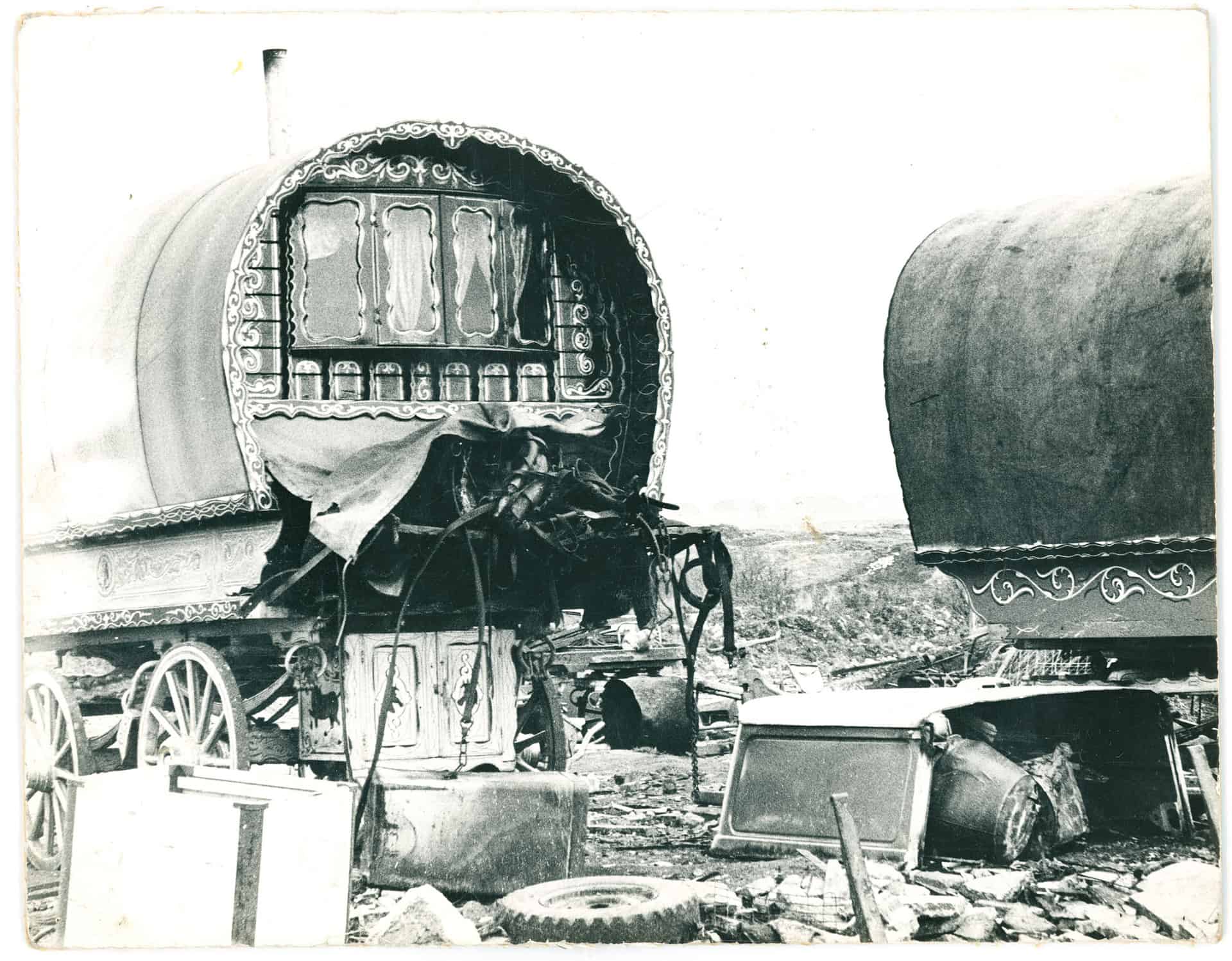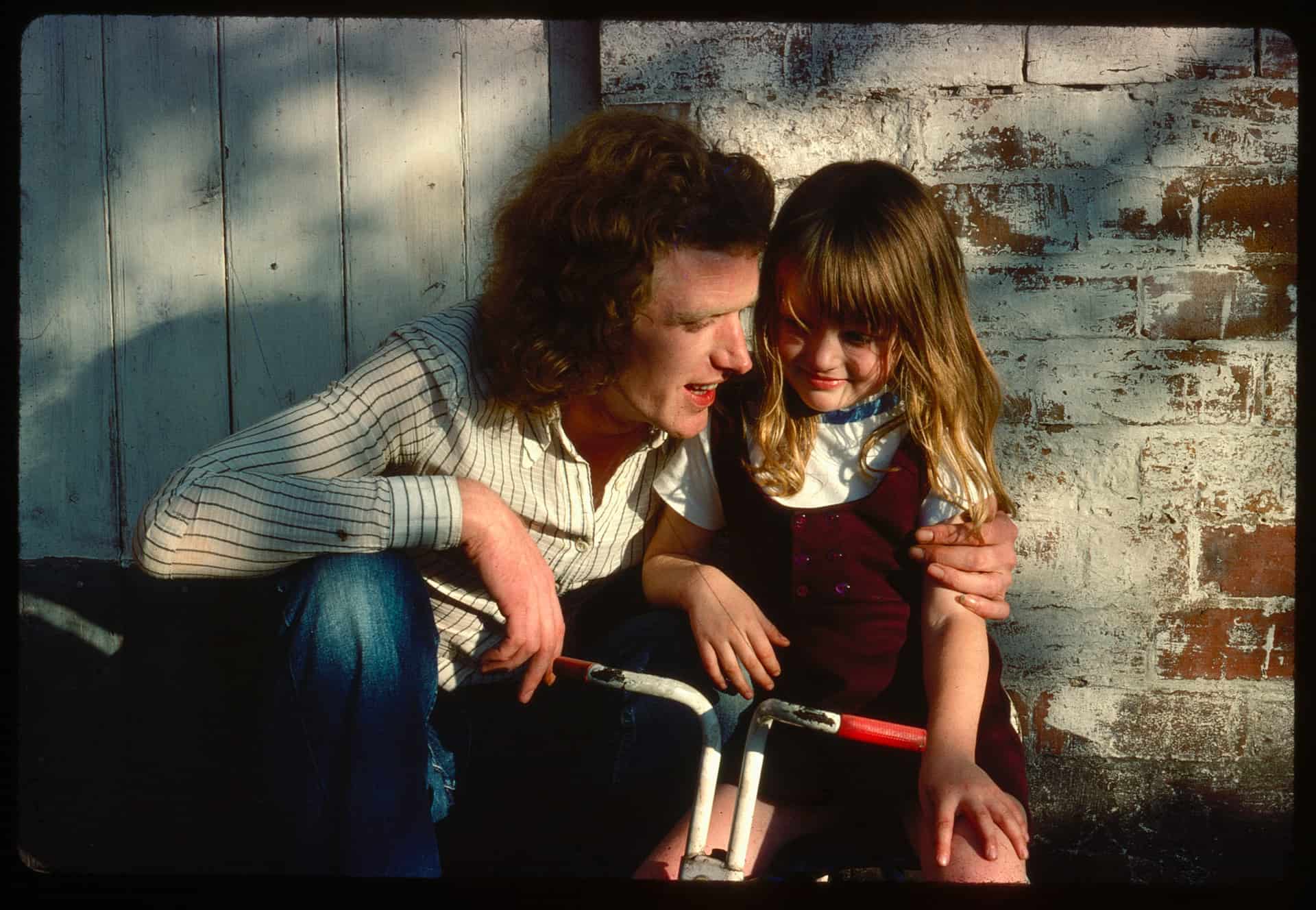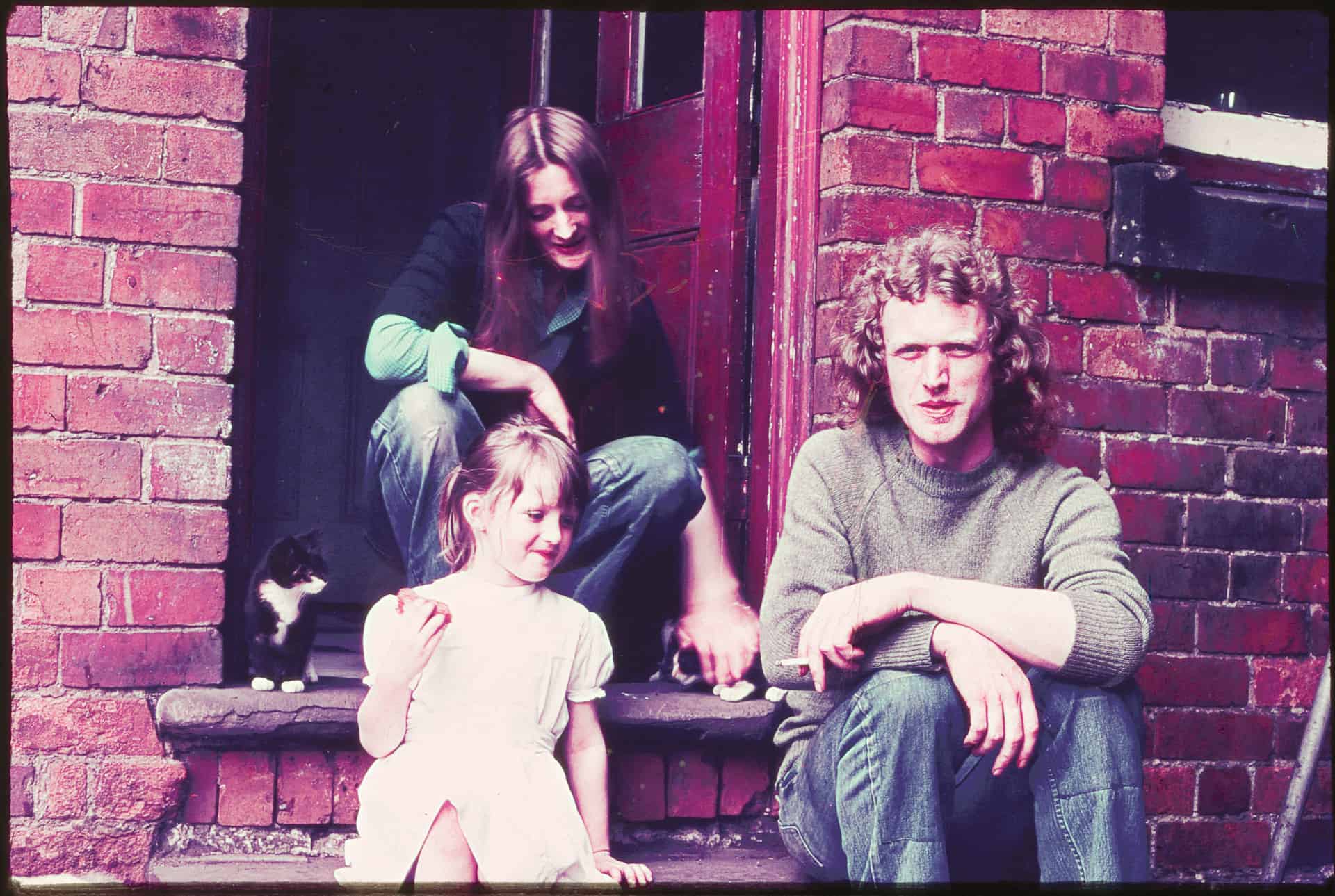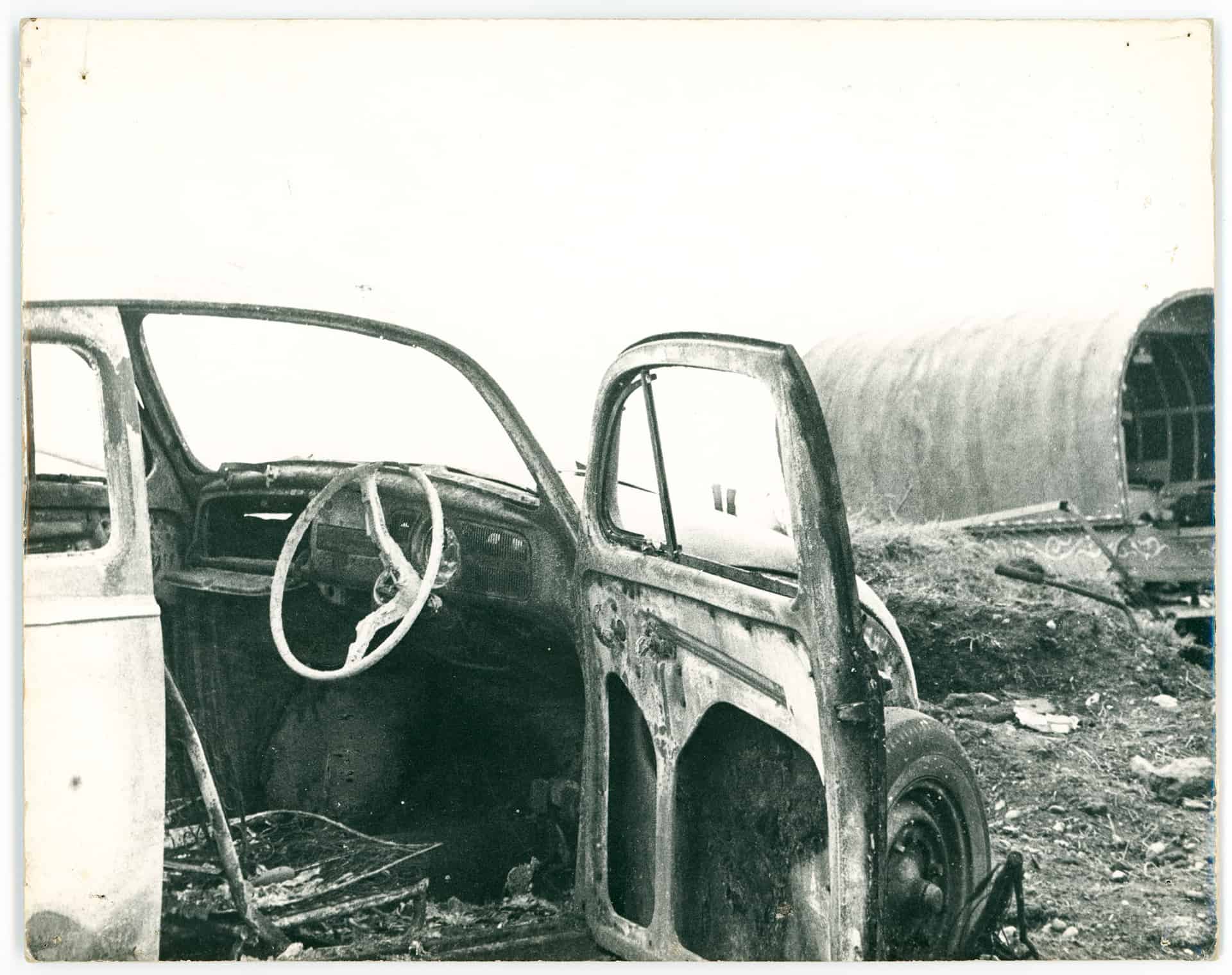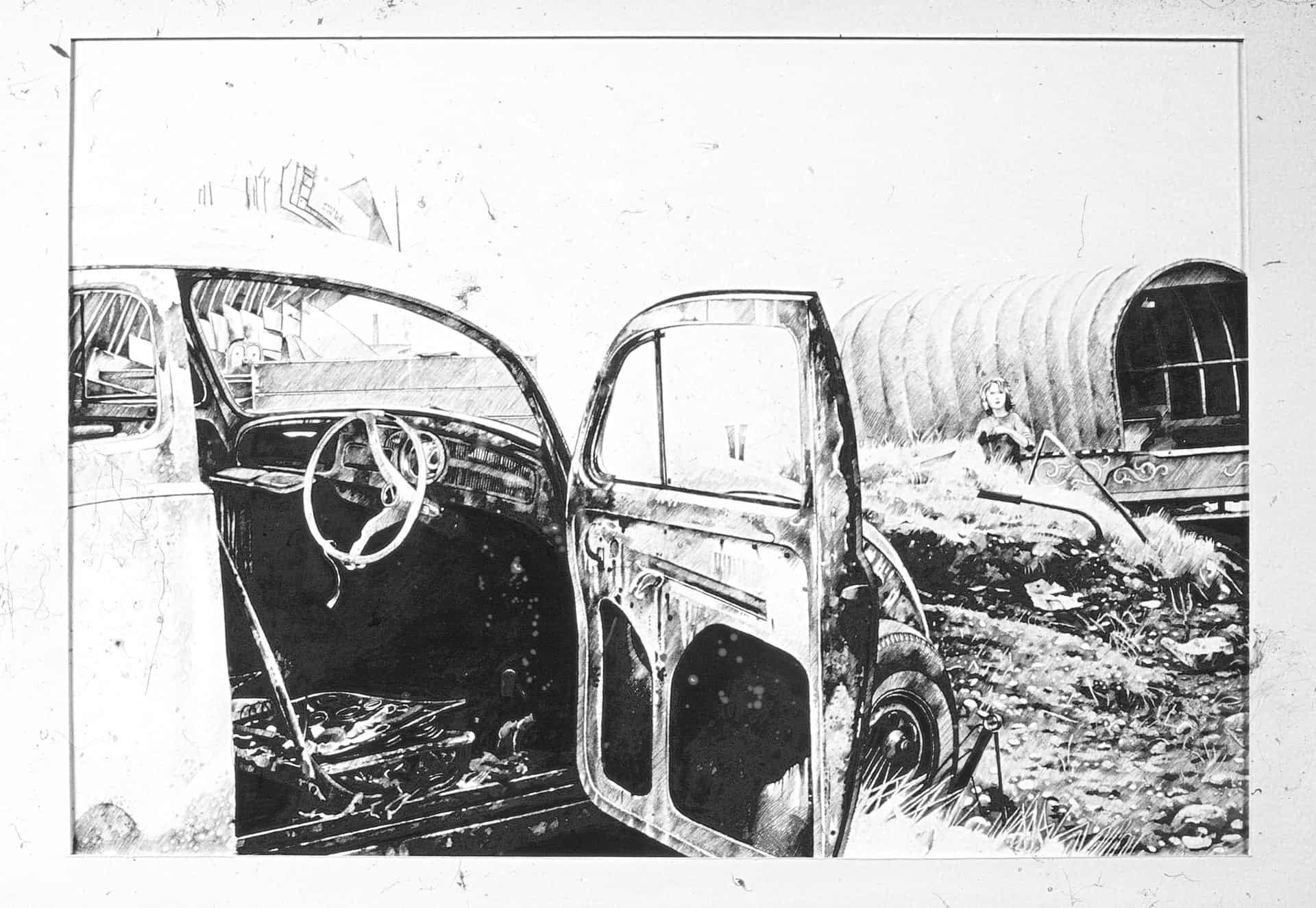Josephine Radcliffe
We spent time in conversation with Josephine Radcliffe and her daughters Tess and Ruth who shared parts of the life story of their late husband and father Robin Radcliffe alongside some of their treasured family photographs.
My name is Josephine Radcliffe and I want to talk about my late husband Robin Radcliffe and some photos from our collection. I was born in Bloxwich and have lived in Walsall on and off for most of my life with quite big gaps in between. I met my husband at art school and we fell in love.
These are our wedding photographs taken in 1971. We'd been living up in North Yorkshire where we'd gone after we'd left college and we just decided we would get married. We just went off to Malton registry office and got married. And then, after that, we just went back to the pub and then we went home, back to Walsall, just to tell everyone that we were married. So that was a bit of a shock. We'd been together a long time, about four years before that, so I suppose it was expected, in a way, but I think people were shocked that we didn't have a traditional wedding, the fact that we'd just gone and done it.
That's Robin's dog, George in the second photo, and in the third photo - the one with us and the little black dog here - that's our dog, Jessie. We brought Jessie back to Walsall. And then we had another dog who was found actually under a gypsy caravan; Robin was just coming back from Birmingham one day and he went past this gypsy encampment and he saw this little dog and he asked if he could have it and they said yes and there she was, a black lurcher. And she was lovely.
This photograph was taken by a guy called Pete Mannox who we knew, he was a brilliant potter and a brilliant photographer and he took a lot of photographs of us. He's actually in a painting of Robin's as a Chinaman. He's a very interesting character because he went off to be a Buddhist.
This painting, it's called 'The Meal', and it had a Chinaman in it and it's a load of people sitting at a table having a bit of a feast. All the people are people that we know. He's always painted from life for the most part. He had ideas and he just kind of worked them out in the painting and he didn't really talk much about them.
He decided this painting of The Meal was going to be on gesso, it's almost like a plaster background and so you have a very, very smooth, glassy finish. The painting was on that so it was going to be a special painting. And he worked on it for ages and then, one day, I don't know, he just decided that he didn't like it anymore and decided he was going to cut it up. And he cut it in half and then half of it he used as a gate. And someone had the other half.
But I suppose it represents something of the mysterious and spiritual perhaps, because he was very interested in Buddhism himself, and Chinese literature and Chinese paintings. He was very clever, he had a great education in Ireland. He won a fantastic scholarship to Dublin High School and then, unfortunately, he left before he finished his education and came to Walsall because his father got a new job over here, so. He loved Dublin, so he was, I suppose, quite unhappy, he didn't really like living in England very much.
We thought we'd go to Scotland at some point, and we did go back to Scotland once but then I don't think he liked Scotland very much either. So we sort of stayed here. When we first lived in the Manse it was a very happy time. He was very, very creative, doing lots of really good paintings and, in fact, he had an exhibition at the D.A gallery in Fulham because he did his MA at Birmingham and they had the exhibition in London. In fact, Saatchi bought one of his paintings off him, it was called The Tennis Court, and that got shipped off to America. It was done in that very realistic style that he did. In fact, Saatchi wanted him to become one of his painters and have a studio but he wouldn't because he thought if he did that then he couldn't paint what he wanted to do. He'd be part of Saatchi’s and he would have to just keep turning out these paintings that Saatchi wanted, but he wanted to develop how he wanted to be, and so he wouldn't do it.
He took a lot of things like acid and smoked a lot of dope and stuff like that but he was also very strict because he wasn't a hippie, he didn't agree with hippy-ism. He didn't think they had any discipline at all, and he thought you had to work hard at your art and you had to be dedicated. I mean he was very serious. And I mean the girls, they both became artists too and he was always "You've gotta draw for 20 minutes every day, you've gotta do it, you've gotta work at it."
And he was very strict and he was so critical of your work. He was a strange combination of being very liberal, intellectually and morally, probably, in some respects, but then total authoritarian disciplinarian when it came to anything to do with education and making art, wasn't it? And he was a complex character, I think, it was difficult to quite work out which side he was more like. He had a great aunt, his Aunt Jemima, who was a Scot, and she said he should have been a preacher. So he could be like that.
In the photo on the right we are in the Manse and we're sitting in the kitchen and Ruth's about four and Tess is a baby and Pete Mannox, the photographer, he took lots of photographs. In fact, he took lots of photographs that Robin painted from and I suppose they had a bit of a partnership in that way really. And this was one of the photographs. We're sitting in the kitchen, Tess in on my lap and Ruth is standing next to me and she's looking very typical because Ruth, she didn't want friends, she just wanted a lot of animals, we had a couple of dogs and several cats and Ruth would just play in the garden with these creatures. And Tess is looking gleefully happy because she was the happiest baby ever, really, and as long as she was on my hip, she was happy. In fact, we used to call her Great Attachment.
Robin got a job with this group of people. He worked with Councillor Worrall who ran a traveller's school and Robin went and he sort of worked with the travellers. I suppose they were teaching them, but he was so interested in what the place looked like that he wanted to do some drawings and things with them. And he also illustrated lots of the traveller's stories and this was one of them.
Tess Radclliffe: I mean, from my perspective, as his daughter, I think we weren't a typical family by any means, we weren't conventional, and I think we had a reputation in our area for being these strange arty types and dad had long hair and a beard; it's all fashionable now but it wasn't then. Who is this man who looks a bit like Jesus? Who paints all day, and our funny curtains and strange smells. We were known for being a bit odd, I think, because they were quite conservative times and I think we benefited in ways that other families haven't through his unusual approach to life. As I get older, I kind of appreciate it more.
But I think in terms of being your conventional bread-winning dad who took you to the park and so on, there was none of that at all really, was there? He would have an intellectual discussion with you and he enriched your life through talking about art and he was a great help if you needed any support with art and so on but I think, anything beyond that, I think he just found it boring, didn't he? Art was his world.
Ruth Radcliffe: But also he also became incredibly interested in astrology, but not just the newspaper stuff, he really did pursue it scientifically. And we have lots of books on it still and he actually started writing a book and in fact we have really got a book on astrology that he wrote called The Rising Science. He did hundreds and hundreds of drawings of faces because he believed that the planets could depict what a person looked like, and he did lots of drawings of typical types, like, "This is a Mars type. This is a Venus type." And we have a whole manuscript of this with lots and lots of drawings. And he did try to get it published and people were very interested in it but it just wasn't the right time I don't think.
Tess: We have this photo that, I don't know why, but it just means a lot to me, so much I have it up at work and I don't know, it just reminds me of my beginnings, I think, and places, it's a sense of identity maybe. And it's when we ... I think we'd gone to ... had we gone to Scotland, or had- It was a very short street of terraced houses. I just really vividly remember being little and sitting on our front doorstep and we always had the front door open and I remember, again, you being quite bohemian about it. We had that wall that you and I scribbled on directly, they just let us be creative, it was all very bohemian and ahead of its time, really.
Pete Mannox took a photo of me sitting on the doorstep, the door open, your Singer sewing machine in the background, scribbly walls, and I've got a margarine tub full of the crayons I'm seen using. Our first really close friends. And I look so happy and my hair's all messy and my clothes, I don't know if you made my dress, but I'm very dishevelled and I just felt it summed up my childhood, really. There was kind of austerity to it in some respects but I look totally free and I just feel like he completely captured me in my essence. And the way I was, in that photo, it feels like it personifies our whole experience of being a family at that time; a bit broke and so on, a bit different, but free. We were different to everybody else and we just used to run up and down the street all day, that's all we did really, or scribble on the walls.
He did a huge drawing of this photograph, and our friends had the drawing. Nigel Tame the musician has this drawing on his wall. It's a broken-down old car with the doors hanging open and it's wrecked. And there's also a gypsy caravan, an old fashioned gypsy caravan, in the background. And he did a drawing of it, a very detailed drawing.
We were talking not long ago because when Robin died and he was cremated we kept his ashes. We still have them and we still debate on where we could scatter them. I was thinking that one of the happiest periods of his life was when we lived at the Manse on Lichfield Road and they used to go off over the Lime Pits. They used to go over there and I suppose they would probably take acid or have a trip, they would go over there. And I think that's the happiest time I can remember him and I was thinking "should we take them over there?"
